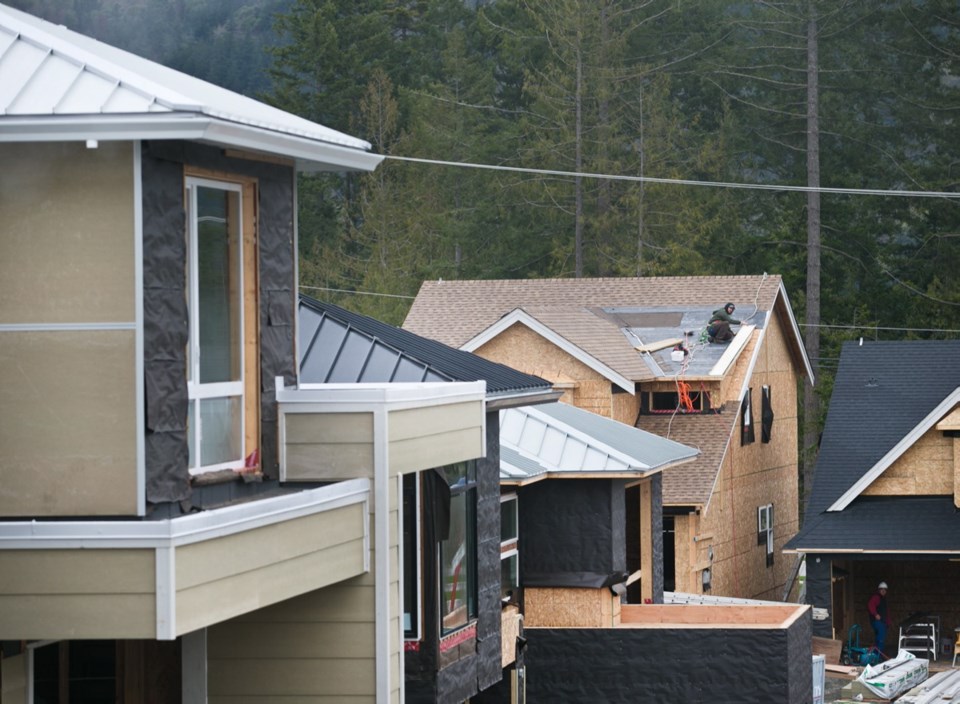Prices for new houses in the capital region have made their biggest monthly jump in nearly nine years, as construction picks up for single-family homes in today’s hot real estate market.
Greater Victoria new-house prices moved up by 1.1 per cent in May from April, matching Vancouver’s increase, Statistics Canada said Thursday: “This was the largest monthly price advance in Victoria since May 2007.”
This region’s monthly change outstripped the national rate of 0.7 per cent, also the highest monthly increase since May 2007, the federal agency said.
Greater Victoria’s year-over-year increase in May was 2.4 per cent, slightly below the national rate of 2.7 per cent, which represented the largest increase in the country since September 2010.
Prices have been climbing for new and existing homes in B.C. The average sales price through the Multiple Listing Service was up by 10 per cent year-over-year in June to $694,925, the B.C. Real Estate Board said.
A total of 12,906 sales took place in B.C. last month, up by 14.3 per cent from June 2015.
“Robust housing demand in the Lower Mainland, Vancouver Island and the Okanagan drove sales growth in June,” said Brendon Ogmundson, board economist, adding that low inventory has created a tight market around the province.
Greater Victoria home builders were hit hard by the 2008 recession. The picture is brighter these days.
“There were 514 single-detached starts in 2013, third lowest in 40 years. And now as of June, six months into the year, we have 451 starts,” said Casey Edge, executive director of the Victoria Residential Builders Association.
Developers have turned to the West Shore, with its lower land prices, to launch small-lot subdivisions where they are putting up more affordable family homes. These homes are typically built on spec — meaning they are not custom-built for an owner, but will go on the market.
One factor driving up new-house prices is the cost of National Building Code regulations.
John Sercombe, co-owner of the Limona Group, one of the region’s most prolific builders of single-family homes, is calling for a five-year moratorium on building code changes.
Every couple of years, changes are introduced to the code. Further measures regarding green ratings are planned for 2017, all pushing up his costs and therefore prices to buyers.
“Over the last 10 years, there have been multiple code changes,” Sercombe said. “I have no problem with code changes, especially if they make the home stronger, better, safer, and all of that stuff.”
One example of a code change that Sercombe does not support is the mandatory requirement to install a rain-screen on two-storey wood frame houses, even those with overhangs.
“There has never been a case of a building envelope failing in a two-storey home documented in North America,” he said.
While there were past problems with leaky condos, a rain screen is not necessary for a two-storey house, Sercombe said.
He recommends that the province create a two-tier system providing for a minimum-safe code that would allow developers to build small, affordable houses. This would help ease today’s housing crunch, which sees many would-be buyers turning to condominiums because they can not afford a house.
If costs can be reduced by many thousands of dollars, “it opens up a whole bunch more people that can afford to buy a home,” Sercombe said.
Maurizio Conforti of family-owned Conforti Homes, which is building custom homes in Saanich, said work has picked up considerably since the recession. The company cut staff during the recession but is now back up to six employees.
Today, it’s difficult to find enough trained workers, Conforti said.
He said he is comforted by knowing that the residential building forecast looks bright for the next two to three years.



